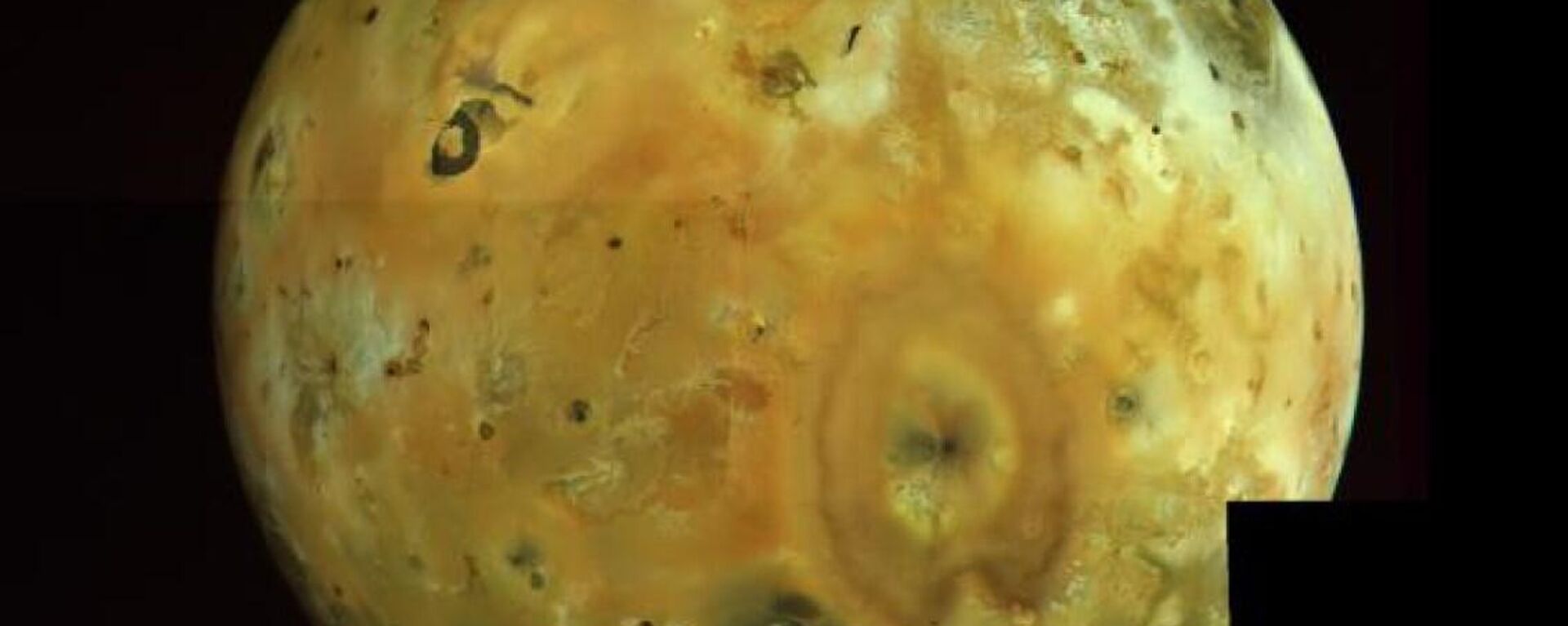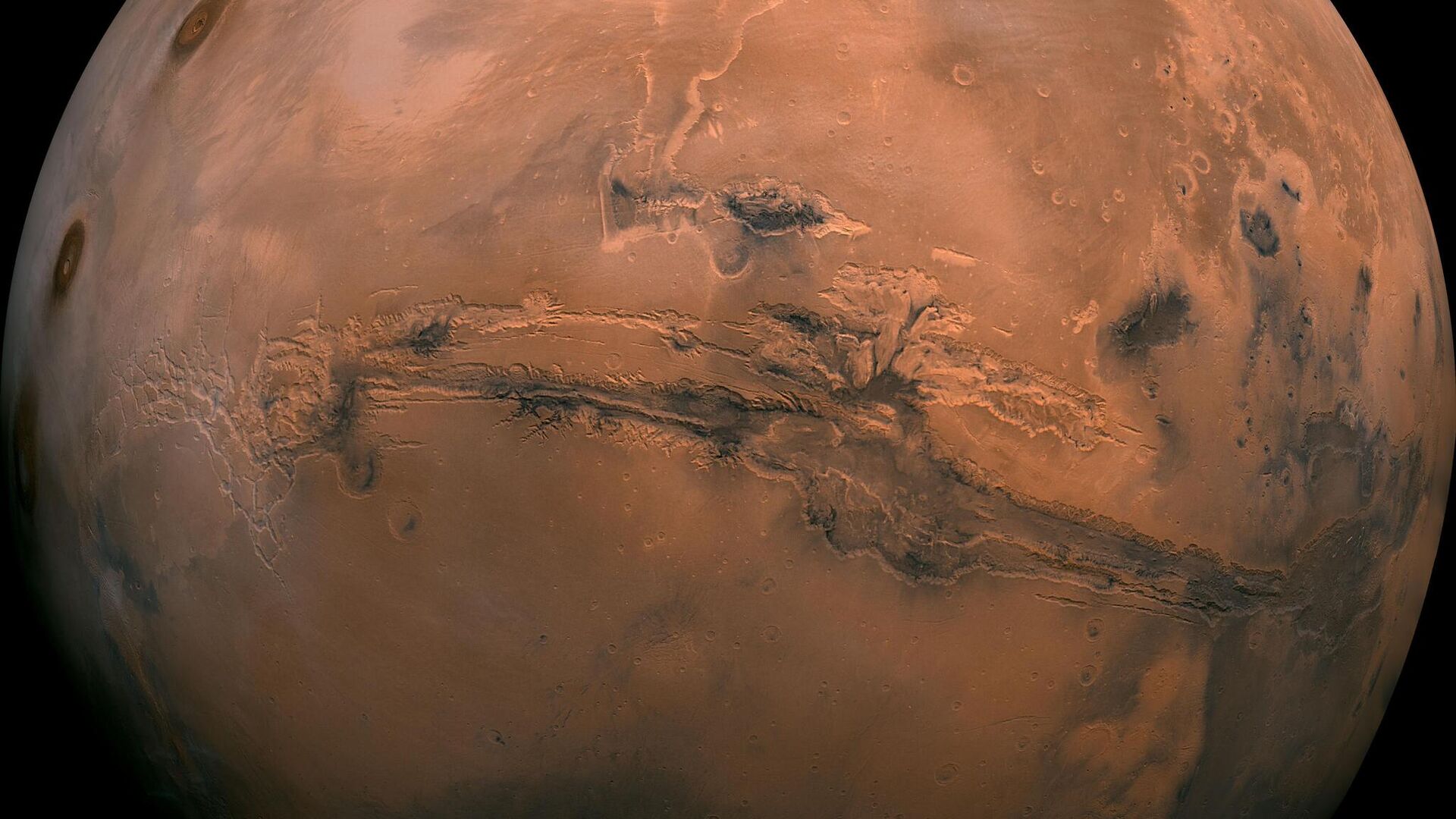https://sputnikglobe.com/20221216/insanely-huge-marsquake-had-energy-equal-to-all-previous-quakes-ever-seen-scientists-say-1105534321.html
Insanely Huge Marsquake Had Energy Equal to All Previous Quakes Ever Seen, Scientists Say
Insanely Huge Marsquake Had Energy Equal to All Previous Quakes Ever Seen, Scientists Say
Sputnik International
Earth isn’t the only world in our solar system with volcanoes and earthquakes: Mars, Venus, and many of the larger planets’ moons have also been observed... 16.12.2022, Sputnik International
2022-12-16T22:35+0000
2022-12-16T22:35+0000
2022-12-16T22:31+0000
science & tech
mars
marsquake
seismic activity
astronomy
https://cdn1.img.sputnikglobe.com/img/07e6/0c/10/1105534176_0:448:2049:1600_1920x0_80_0_0_abaa706e58445053b7af8c84753fb45b.jpg
A marsquake tracked by Earth scientists earlier this year has had its power quantified for the first time, and the results are off the scales.Clinton was part of a team of seven scientists who published an article on the event in Geophysical Research Letters on Wednesday.They found that the May marsquake was actually slightly weaker in intensity than previously believed - magnitude 4.7 versus magnitude 5.0 reported at the time - but lasted for roughly 10 hours, making it much stronger overall than any previously detected marsquake. The previous record holder released only one-fifth of the energy, by comparison.On Earth, a magnitude 4.7 earthquake is rarely something to write home about, but on Mars, which doesn’t have the same degree of tectonic activity as the Earth, it’s a pretty big deal. The red planet doesn’t even have tectonic plates like Earth does, or a dynamic molten interior like the Earth’s. As a result, Mars also has almost no magnetic field. It is believed to have possessed nearly all of these features in the distant past, however.Humans have dispatched a number of probes to study the planet, which has long occupied the imaginations of human observers. Several rovers are wandering the Martian surface, studying aspects of the surface and the atmosphere up-close, while orbital probes observe planetary properties from a wider point of view. In June, the Chinese Tianwen-1 orbiter completed its photography of the entire Martian surface - the latest in several such efforts since the 1970s.
https://sputnikglobe.com/20221215/ready-for-my-close-up-nasas-juno-probe-to-fly-just-932-miles-over-jupiters-volcanic-moon-io-1105503721.html
mars
Sputnik International
feedback@sputniknews.com
+74956456601
MIA „Rossiya Segodnya“
2022
News
en_EN
Sputnik International
feedback@sputniknews.com
+74956456601
MIA „Rossiya Segodnya“
Sputnik International
feedback@sputniknews.com
+74956456601
MIA „Rossiya Segodnya“
science & tech, mars, marsquake, seismic activity, astronomy
science & tech, mars, marsquake, seismic activity, astronomy
Insanely Huge Marsquake Had Energy Equal to All Previous Quakes Ever Seen, Scientists Say
Earth isn’t the only world in our solar system with volcanoes and earthquakes: Mars, Venus, and many of the larger planets’ moons have also been observed shaking, twisting, cracking, and spewing lava or other internal contents onto their surface as well.
A marsquake tracked by Earth scientists earlier this year has had its power quantified for the first time, and the results are off the scales.
"The energy released by this single marsquake is equivalent to the cumulative energy from all other marsquakes we've seen so far," seismologist John Clinton of the Swiss Federal Institute of Technology in Switzerland, said in a Wednesday news release. ‘[A]nd although the event was over 2,000 kilometers (1,200 miles) distant, the waves recorded at InSight were so large they almost saturated our seismometer."
Clinton was part of a team of seven scientists who published an article on the event in
Geophysical Research Letters on Wednesday.

15 December 2022, 22:30 GMT
They found that the May marsquake was actually slightly weaker in intensity than previously believed - magnitude 4.7 versus magnitude 5.0
reported at the time - but lasted for roughly 10 hours, making it much stronger overall than any previously detected marsquake. The previous record holder released only one-fifth of the energy, by comparison.
That is, of course, just three years’ worth of evidence: the first marsquake was not observed by human scientists until 2019, although some 450 events have been observed since then. However, Mars probes have been looking for them since 1975.
On Earth, a magnitude 4.7 earthquake is rarely something to write home about, but on Mars, which doesn’t have the same degree of tectonic activity as the Earth, it’s a pretty big deal. The red planet doesn’t even have tectonic plates like Earth does, or a
dynamic molten interior like the Earth’s. As a result, Mars also has almost no magnetic field. It is believed to have possessed nearly all of these features in the distant past, however.
The lack of a strong magnetic field meant solar wind emitted by the sun was free to strip away the Martian atmosphere, leaving the planet a cold, barren, and dry wasteland.
Humans have dispatched a number of probes to study the planet, which has long occupied the imaginations of human observers. Several rovers are wandering the Martian surface, studying aspects of the surface and the atmosphere up-close, while orbital probes observe planetary properties from a wider point of view. In June, the Chinese Tianwen-1 orbiter
completed its photography of the entire Martian surface - the latest in several such efforts since the 1970s.


